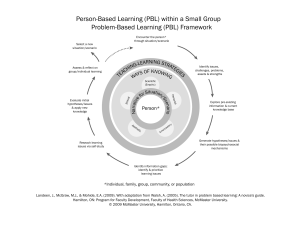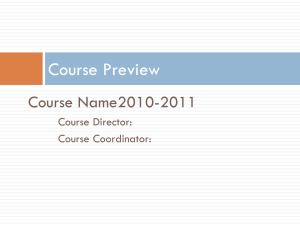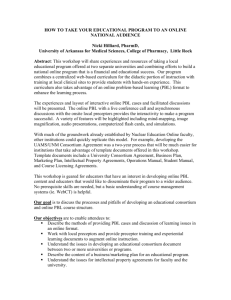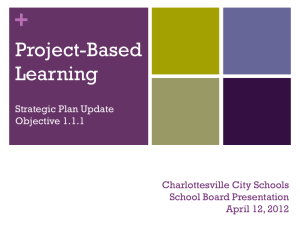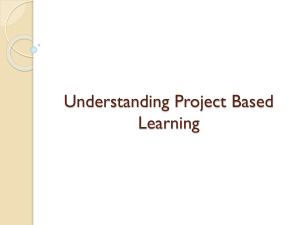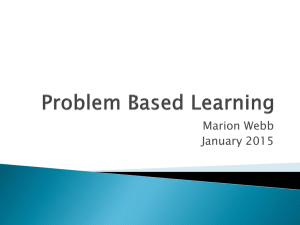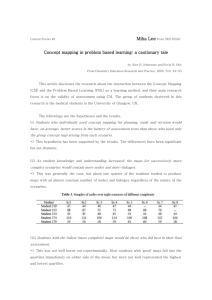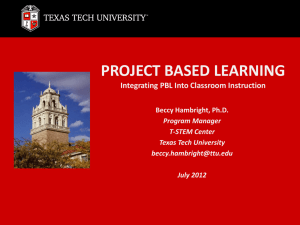Facilitator Guidelines
advertisement
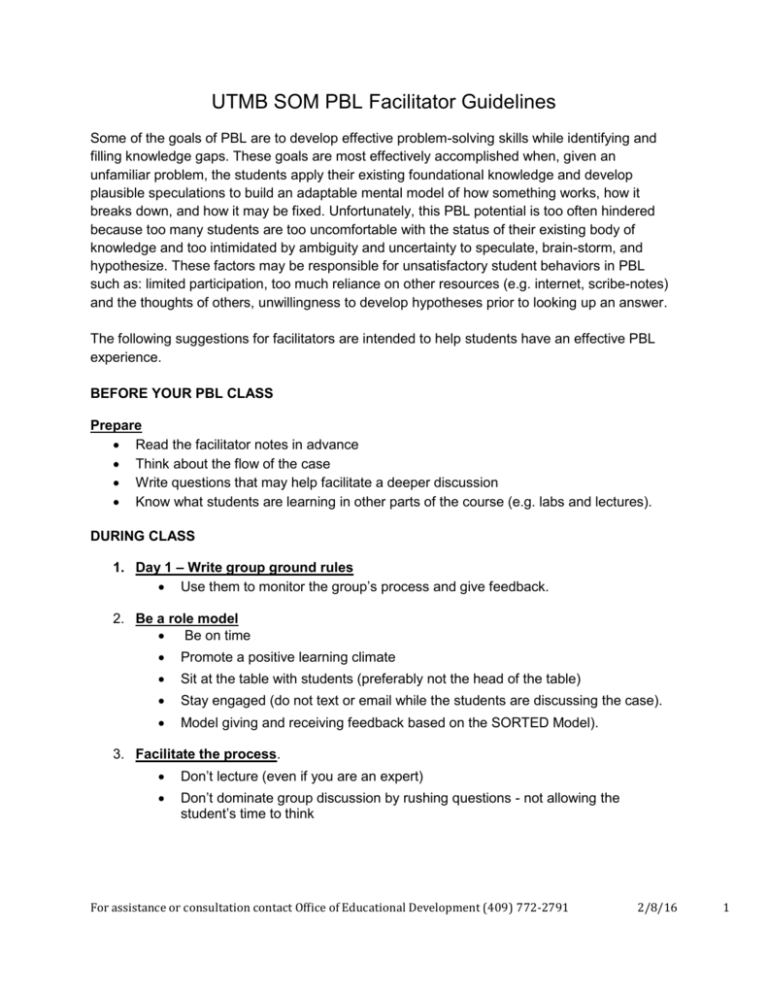
UTMB SOM PBL Facilitator Guidelines Some of the goals of PBL are to develop effective problem-solving skills while identifying and filling knowledge gaps. These goals are most effectively accomplished when, given an unfamiliar problem, the students apply their existing foundational knowledge and develop plausible speculations to build an adaptable mental model of how something works, how it breaks down, and how it may be fixed. Unfortunately, this PBL potential is too often hindered because too many students are too uncomfortable with the status of their existing body of knowledge and too intimidated by ambiguity and uncertainty to speculate, brain-storm, and hypothesize. These factors may be responsible for unsatisfactory student behaviors in PBL such as: limited participation, too much reliance on other resources (e.g. internet, scribe-notes) and the thoughts of others, unwillingness to develop hypotheses prior to looking up an answer. The following suggestions for facilitators are intended to help students have an effective PBL experience. BEFORE YOUR PBL CLASS Prepare Read the facilitator notes in advance Think about the flow of the case Write questions that may help facilitate a deeper discussion Know what students are learning in other parts of the course (e.g. labs and lectures). DURING CLASS 1. Day 1 – Write group ground rules Use them to monitor the group’s process and give feedback. 2. Be a role model Be on time Promote a positive learning climate Sit at the table with students (preferably not the head of the table) Stay engaged (do not text or email while the students are discussing the case). Model giving and receiving feedback based on the SORTED Model). 3. Facilitate the process. Don’t lecture (even if you are an expert) Don’t dominate group discussion by rushing questions - not allowing the student’s time to think For assistance or consultation contact Office of Educational Development (409) 772-2791 2/8/16 1 4. Utilize the white board to capture case information and keep the group’s problemsolving process visible throughout the case. Problem lists Hypotheses list Learning issues 5. Guide students to use their knowledge to construct their own hypotheses using visual aids (e.g. flow diagrams, concept maps, and mechanisms) especially in discussions of difficult concepts. 6. Ask open-ended questions to: encourage critical thinking allow students to develop their own hypotheses based on their current their level of knowledge encourage development of learning issues (e.g., “how might that happen?”) help students assess, evaluate, compare, weigh evidence, and rank hypotheses help students externalize their thinking and provide reasoning behind their opinions expand the discussions keep group focused on issues discussed foster self-directed learning. encourage quieter group members to contribute 7. Run the student PowerPoint case slides yourself in order to control the timing of student discussions. (Note: It is best to bring your own computer. If you cannot or choose not to bring a laptop, use a student’s laptop to run the PowerPoint. If you are using an iPad, you will need to use the pdf version of the slides. Be aware, however, hyperlinks and videos will not work on the pdf.) 8. Anticipate what is on the next slide. Often the “tasks” slides are there to ensure that all groups discuss similar issues and questions that should arise from the previous information. Give the group the opportunity to bring up these issues prior to moving to the task slides. 9. Students should limit the use of their own laptops/smart phones (e.g. to look up definitions) They should NEVER use them to look up their learning issues during class time. 10. Encourage students to use the basic sciences to explain patient’s symptoms and clinical signs. For assistance or consultation contact Office of Educational Development (409) 772-2791 2/8/16 2 11. Make sure students use their own voice (their own words) when synthesizing and discussing information (in the case and when reporting learning issues), not just read information directly from their lecture notes, journal articles, or off of the internet to the group. (Suggestion: ask student to describe information as they would explain it to his/her grandmother. Based on the student’s description, you may want to guide them to develop a more sophisticated discussion). 12. Encourage students to express learning issues as a specific question. (e.g. “How does glycolysis contribute to glucose homeostasis?” versus “Understand glycolysis”). 13. Ensure that the discussion of each learning issues IS a discussion - not a minilecture read by a student. 14. Document student’s problems (seek help from course directors if needed), progress and successes in order to give effective feedback and accurate and honest end-of-course evaluations. 15. Provide feedback to students following the SORTED Model anytime you see a student behavior that could be improved in a way that students believe you want them to succeed and improve. 16. Evaluate the students’ behavior based on criteria, not relative to the norm of the group. For assistance or consultation contact Office of Educational Development (409) 772-2791 2/8/16 3
